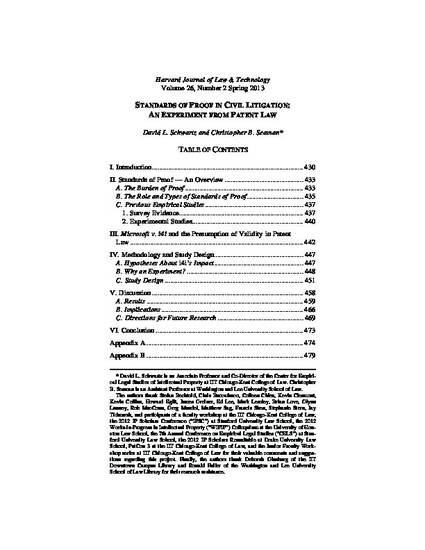
- Law and
- Litigation
Standards of proof are widely assumed to matter in litigation. They operate to allocate the risk of error between litigants, as well as to indicate the relative importance attached to the ultimate decision. But despite their perceived importance, there have been relatively few empirical studies testing jurors’ comprehension and application of standards of proof, particularly in civil litigation. Patent law recently presented an opportunity to assess the potential impact of varying the standard of proof in civil cases. In Microsoft Corp. v. i4i Limited Partnership, the Supreme Court held that a patent’s presumption of validity can only be overcome by clear and convincing evidence. However, it also explained that the jury should be instructed that it may be easier to satisfy this standard when the party challenging the patent’s validity offered evidence that was not previously been considered by the U.S. Patent & Trademark Office. In this project, we conducted an experimental study to test the impact of standards of proof in patent invalidity challenges. We found that delivering the jury instruction directed by the i4i decision resulted in mock jurors finding a patent invalid at rates statistically indistinguishable from the preponderance of the evidence standard explicitly rejected by the Court in that case. This surprising result suggests that Microsoft may have actually achieved its desired outcome in i4i by making it easier for juries to invalidate questionable patents, even though it lost the case.

Posted with permission from the copyright owner.